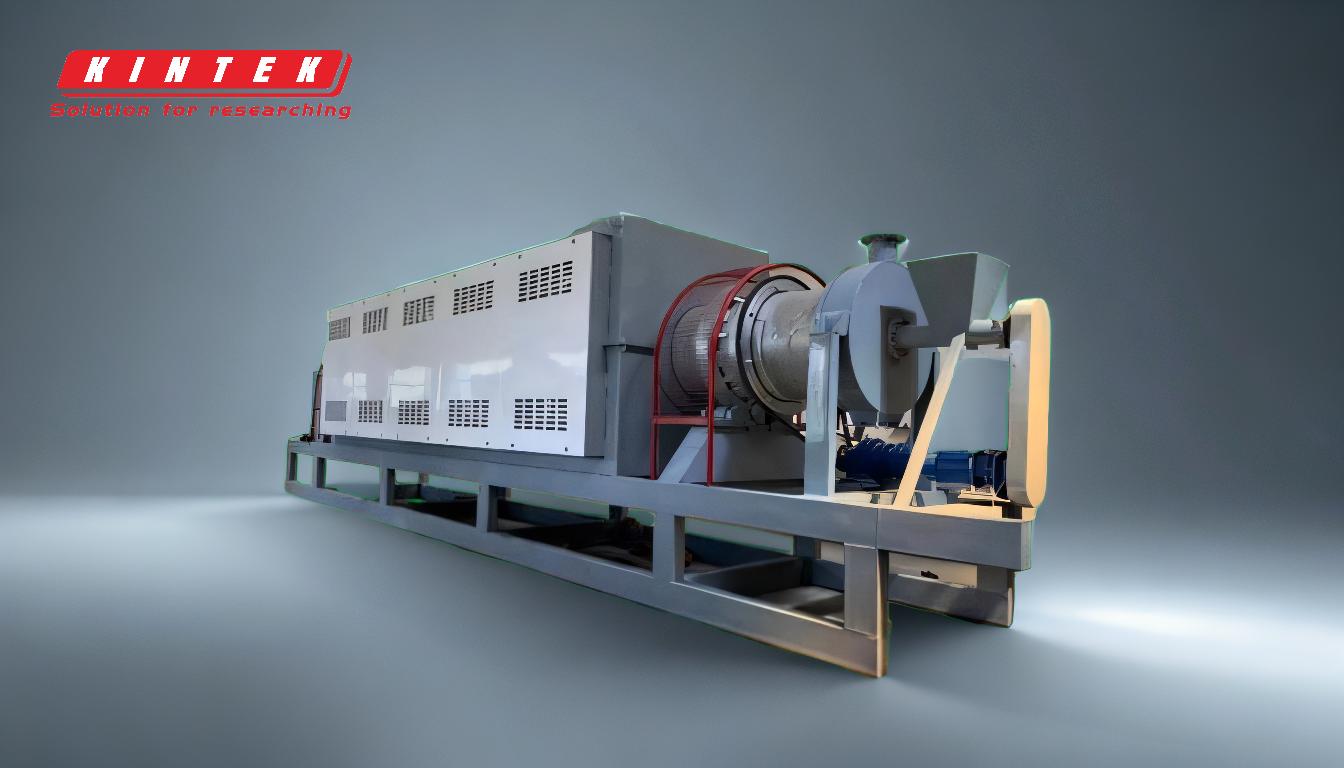Pyrolysis is a thermochemical decomposition process that breaks down organic materials at elevated temperatures in the absence of oxygen. This process results in the production of various byproducts such as liquid hydrocarbons, char, biogas, and organic acids. The three main types of pyrolysis are slow pyrolysis, fast pyrolysis, and flash pyrolysis, each differing in heating rates, temperature ranges, and the types of products they yield. Slow pyrolysis focuses on char production, fast pyrolysis maximizes liquid bio-oil and gas yields, and flash pyrolysis is extremely rapid, producing high yields of bio-oil and gases. Understanding these types is crucial for selecting the appropriate method based on desired outputs and applications.
Key Points Explained:

-
Definition of Pyrolysis:
- Pyrolysis is a chemical decomposition process that occurs when organic materials are heated to high temperatures (typically above 430°C or 800°F) in the absence of oxygen.
- It involves simultaneous physical and chemical changes, leading to the breakdown of complex organic molecules into simpler compounds.
- The term "pyrolysis" originates from the Greek words "pyro" (fire) and "lysis" (separating), reflecting its nature of separating materials through heat.
-
Types of Pyrolysis:
-
Slow Pyrolysis:
- Characterized by low heating rates (0.1–1°C/s) and long residence times (minutes to hours).
- Primarily produces solid char, with minimal liquid and gas yields.
- Commonly used for charcoal production and soil amendment applications.
- Temperature range: 300–500°C.
-
Fast Pyrolysis:
- Involves rapid heating rates (10–200°C/s) and short residence times (seconds).
- Maximizes the production of liquid bio-oil and gases, with minimal char.
- Most widely used method for biofuel production.
- Temperature range: 400–600°C.
-
Flash Pyrolysis:
- Extremely rapid heating rates (>1000°C/s) and very short residence times (milliseconds).
- Produces high yields of bio-oil and gases, with negligible char.
- Suitable for high-value chemical production and energy recovery.
- Temperature range: 500–1000°C.
-
Slow Pyrolysis:
-
Products of Pyrolysis:
-
Liquid Hydrocarbons (Bio-oil):
- A dark brown, viscous liquid composed of water, organic acids, and other oxygenated compounds.
- Used as a renewable fuel or feedstock for chemical production.
-
Char:
- A solid residue rich in carbon, used as a soil amendment, fuel, or precursor for activated carbon.
-
Biogas:
- A mixture of gases (e.g., methane, hydrogen, carbon monoxide) used for energy generation or as a chemical feedstock.
-
Aqueous Phase:
- Contains water-soluble organic acids and other compounds, often requiring further treatment or processing.
-
Liquid Hydrocarbons (Bio-oil):
-
Applications of Pyrolysis:
-
Energy Production:
- Bio-oil and biogas can be used as renewable energy sources, reducing reliance on fossil fuels.
-
Waste Management:
- Pyrolysis is used to convert organic waste (e.g., biomass, plastics) into valuable products, minimizing landfill use.
-
Chemical Production:
- Bio-oil and gases serve as feedstocks for producing chemicals, fuels, and other industrial products.
-
Soil Improvement:
- Char produced from slow pyrolysis can enhance soil fertility and carbon sequestration.
-
Energy Production:
-
Factors Influencing Pyrolysis:
-
Temperature:
- Higher temperatures favor gas production, while lower temperatures favor char and liquid yields.
-
Heating Rate:
- Faster heating rates increase liquid and gas yields, while slower rates favor char production.
-
Residence Time:
- Longer residence times enhance char formation, while shorter times maximize liquid and gas yields.
-
Feedstock Composition:
- The type of organic material (e.g., wood, plastics, agricultural waste) affects the distribution and quality of pyrolysis products.
-
Temperature:
-
Advantages of Pyrolysis:
- Converts waste materials into valuable products, promoting a circular economy.
- Reduces greenhouse gas emissions by replacing fossil fuels with renewable alternatives.
- Provides a sustainable solution for waste management and energy production.
-
Challenges and Considerations:
- High initial capital costs for pyrolysis equipment.
- Requires careful control of process parameters (e.g., temperature, heating rate) to optimize product yields.
- Bio-oil often requires upgrading to improve stability and usability.
By understanding the types, products, and applications of pyrolysis, purchasers of equipment and consumables can make informed decisions about the most suitable pyrolysis method for their specific needs. Whether the goal is energy production, waste management, or chemical synthesis, selecting the right pyrolysis process is essential for achieving desired outcomes efficiently and sustainably.
Summary Table:
| Aspect | Details |
|---|---|
| Definition | Thermochemical decomposition of organic materials at high temperatures without oxygen. |
| Types | Slow, Fast, Flash Pyrolysis (differ in heating rates, temperatures, and outputs). |
| Products | Bio-oil, Char, Biogas, Aqueous Phase. |
| Applications | Energy production, waste management, chemical synthesis, soil improvement. |
| Key Factors | Temperature, heating rate, residence time, feedstock composition. |
| Advantages | Converts waste into valuable products, reduces emissions, sustainable. |
| Challenges | High capital costs, precise process control, bio-oil upgrading required. |
Ready to explore pyrolysis solutions for your needs? Contact us today to learn more!









